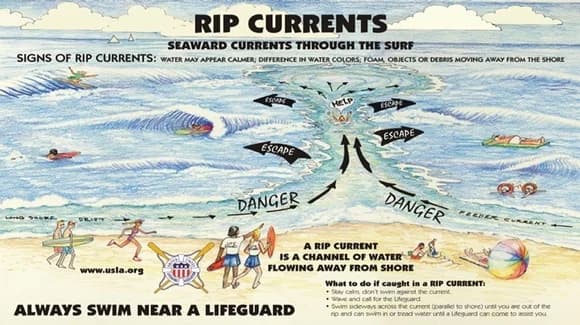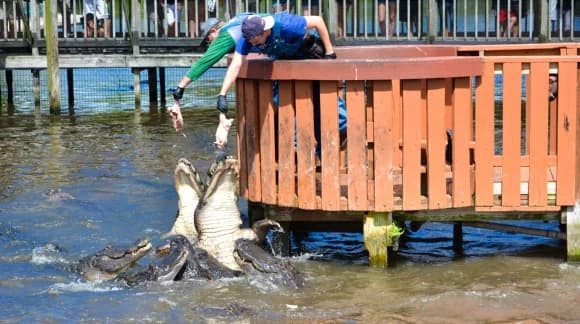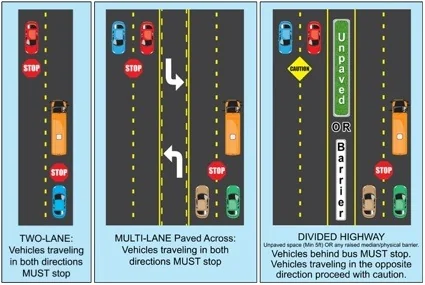Rip Currents

The biggest single danger when swimming off the coasts of Florida is not sharks, it is rip currents. There are six times as many deaths in Florida attributable to rip currents than in any other state in the USA. The most dangerous stretch of coastline is the Florida Panhandle, followed by the Southeast and then the East coast. The Gulf Coast is the least affected by rip currents.
In Florida, 80% off all beach rescues involve someone caught in a rip current and most deaths occur between March and September.
A rip current is when the water is funnelled back out to sea off the beach causing a strong current away from the shore. To the untrained eye they can be difficult to spot and often appear as a patch of apparently calm (and sometime murky) water between two areas of surf.
Rip currents can occur at any time but are more common during periods of storm activity such as tropical storms or hurricanes. Storms hundreds of miles out to sea can still cause dangerous rip currents on the beach.
General advice is if in any doubt, do not enter the water. Follow basic safety tips and keep well clear of jetties and if at all possible only swim where there is a manned lifeguard station. Check the warning flags on the beach to help alert you to any potential dangers.
How to escape from a rip current
If you do get caught in a rip current, the best advice is stay calm and not to panic. This of course is easier said than done but the biggest danger is from panic and exhaustion.
Do not try to swim against the current but instead try swimming parallel to the beach until you break out of the current when you can swim back to the shore. If the rip current is not running at right angles to the beach, you may find it easier to swim one way rather than the other.
If you cannot break out of the current, then try to float or tread water and signal for help.
If you see someone in difficulties, think twice before trying to rescue them yourselves, much better to contact a lifeguard or dial 911. If you do go into the water, you need take something that is buoyant, that is why lifeguards always carry rescue buoys.
Whatever you do, do not make physical contact with the victim, the biggest danger is that they will drag you under. The best thing is to try and calm them down and get them to move out of the rip current.





